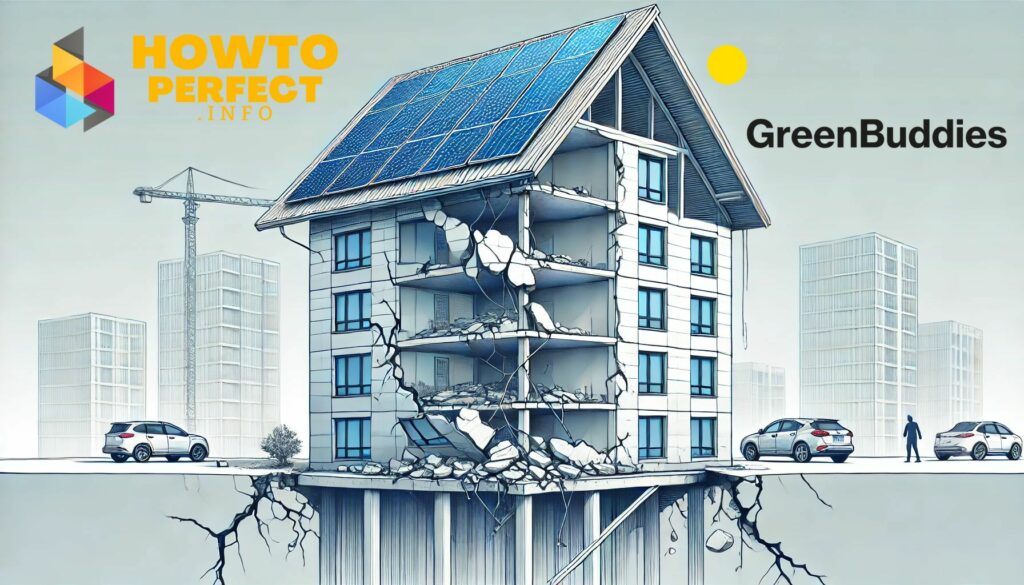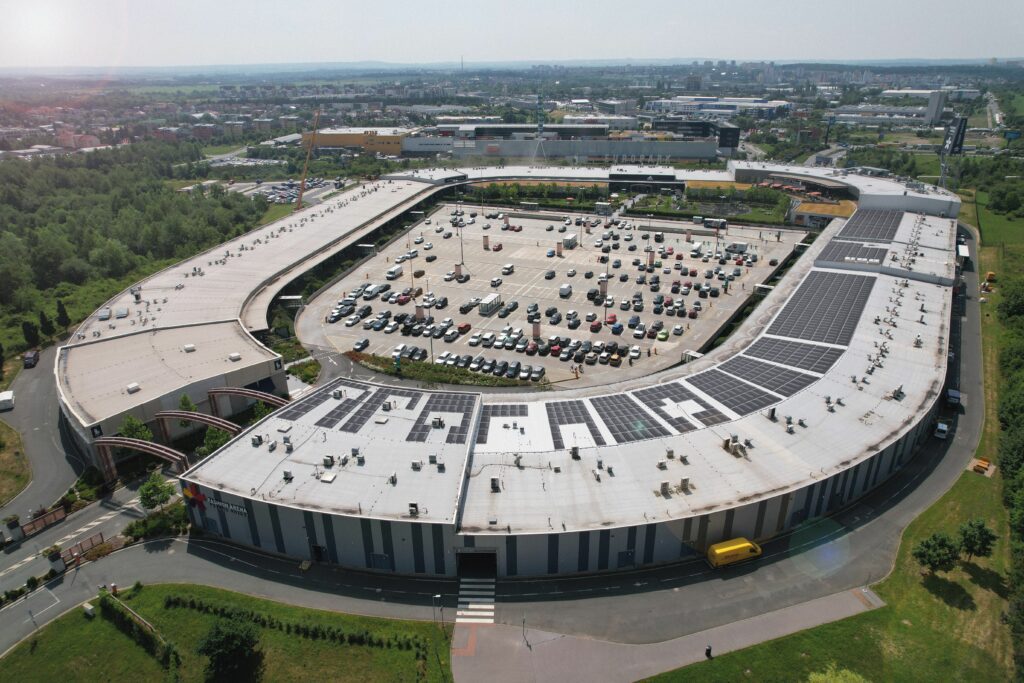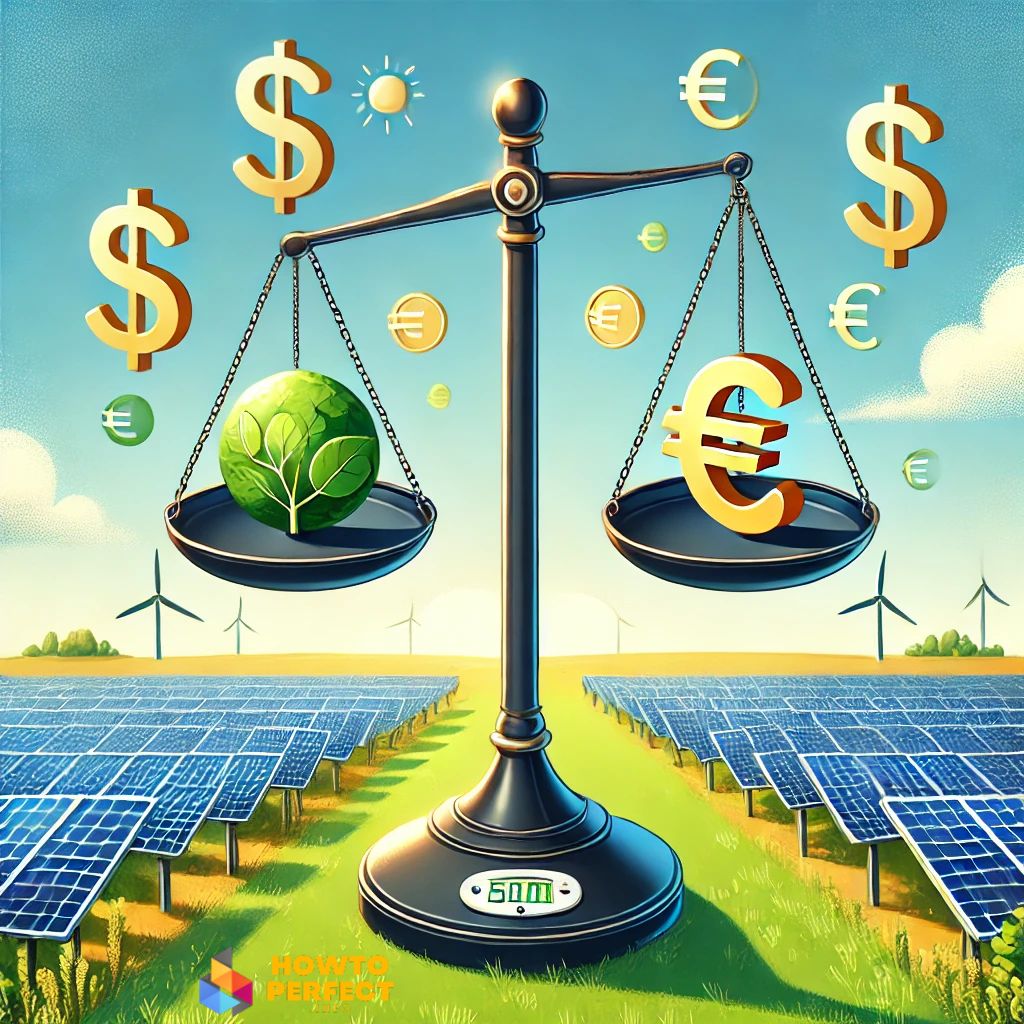Building Structure for PV Systems is a critical consideration when installing photovoltaic (PV) systems. Ensuring the structural integrity of buildings is paramount, especially for older buildings or those with limited load capacity. Lightweight solar panels, such as eArc modules, provide an innovative solution by being 70% lighter and up to 95% thinner than standard glass modules.
These characteristics make eArc panels ideal for roofs that cannot support the heavier loads of traditional solar panels. Their reduced weight not only facilitates easier transport and installation, significantly lowering logistical and installation costs but also ensures long-term performance and durability even in harsh environments. The adoption of such advanced PV technology enables a broader range of buildings to implement solar energy solutions, promoting sustainability and energy efficiency across various sectors.
Structural integrity refers to the ability of a structure to withstand its intended load without failing due to fracture, deformation, or fatigue. It involves ensuring that buildings, bridges, vehicles, machinery, and other structures are built and maintained to perform their intended function over their expected lifetime without collapsing or experiencing significant damage.
Inadequate Building Structure for PV Systems in 2024 poses significant risks as the added weight and stress from solar panels can exacerbate existing structural weaknesses, leading to potential safety hazards, increased maintenance costs, and reduced efficiency of the photovoltaic systems. Ensuring that buildings are properly assessed and reinforced to handle the additional load is crucial for the successful and safe implementation of solar energy solutions.
Table of Contents
ToggleLightweight Photovoltaic Panels for Structurally Inadequate Roofs
As the demand for solar energy continues to rise, many buildings with structurally inadequate roofs face challenges in supporting traditional photovoltaic (PV) panels. Lightweight photovoltaic panels offer a viable solution, enabling these buildings to harness solar power without compromising structural integrity.
These advanced panels are designed to be lighter, reducing the load on roofs and making solar installations feasible for a wider range of buildings. By utilizing lightweight PV technology, businesses and homeowners can now overcome previous limitations, ensuring a sustainable and energy-efficient future.
Overcoming the challenges of installing solar panels on industrial roofs
On a significant number of industrial building roofs, it has not been possible to install roof-mounted solar power systems because the building permits for these structures do not allow for the installation of standard roof systems due to the high weight load of these systems.
The main aspect of this issue is the structural integrity and the resulting load-bearing capacity of the roof. A typical load-bearing system weighs between 20-25 kg/m², while a system with lightweight panels weighs 5-7 kg/m². This ultralight technology is therefore an ideal solution for older buildings that were not designed or constructed to accommodate high loads.
At Greenbuddies, we address this issue by partnering with Sunman, a manufacturer of flexible lightweight panels called eArc. These panels enable the installation of photovoltaics on buildings that are structurally inadequate for traditional ballast systems.

Features and Benefits of eArc Flexible Solar Panels
These solar panels are made from advanced composite materials that reduce their overall weight without compromising durability or performance. With a weight significantly lower than traditional glass solar panels, Sunman panels offer a unique combination of lightness and efficiency.
Technical specifications of Sunman’s lightweight panels include high efficiency in converting sunlight to electrical energy, long lifespan, and ease of installation. The panels are designed to be suitable for both new projects and retrofits of existing roofs, expanding their range of applications.
Comparison with traditional photovoltaic panels shows that Sunman’s lightweight panels offer significant advantages, especially in situations where maintaining the integrity of the roof structure is crucial or where there are limitations regarding additional load. This feature makes Sunman panels an ideal choice for the development of solar energy in urban areas with limited access to traditional installations.
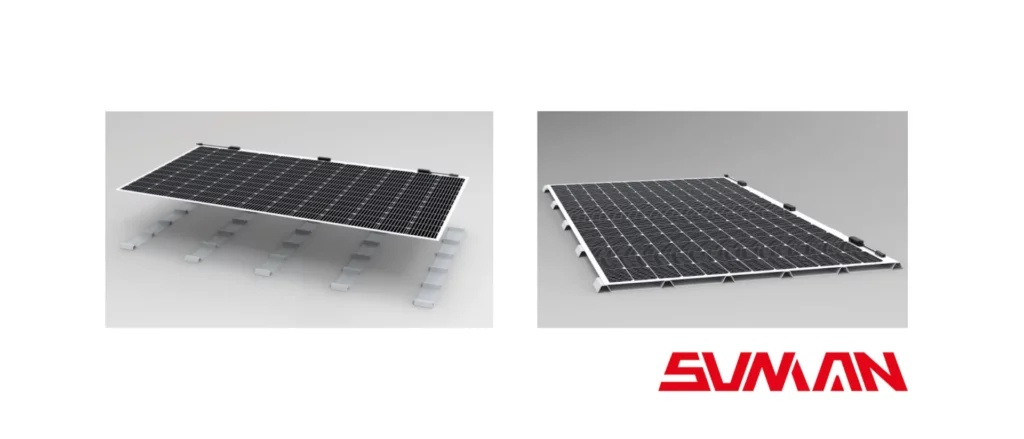
Key Advantages of eArc Lightweight Solar Panels
Low Weight of PV Panels eArc modules are 70% lighter and up to 95% thinner than standard glass modules. This significant reduction in weight and thickness makes eArc panels ideal for roofs that cannot support the heavier loads of conventional solar systems. Lightweight panels allow for the installation of solar energy on roofs with limited load capacity without the need for additional structural modifications.
Higher Efficiency in Transporting PV Modules Due to their lightness and compactness, eArc panels are easier to transport and handle. Up to 60% more power in kW can be fitted on one pallet compared to standard panels, significantly reducing logistics costs and simplifying the distribution of solar systems.
Durability of Sunman Panels eArc panels have successfully passed the same durability tests required for glass modules, including IEC 61215:2016, IEC 61730:2016, and UL1703 (USA) standards. Additionally, they have been tested for corrosion resistance, confirming their exceptional durability even in harsh conditions.
Rapid Installation of Ultralight PV Systems The installation of eArc panels is quick and efficient, requiring no drilling into the roof covering, reducing the installation time by 40%. Furthermore, the installation does not require any special tools, simplifying the process and reducing mounting costs
Solar Energy Options for Specific Roof Types
Foil Roofs with Low Load Capacity Lightweight Sunman solar panels are ideal for foil roofs with low load capacity because their construction requires minimal load. These roofs typically can support less weight than traditional roofing systems, making the lightness of eArc panels particularly valuable. Due to their reduced weight, they do not exert significant pressure on the roof structure, eliminating the risk of damage or the need for roof reinforcement.
Trapezoidal Profiled Steel Roofs Trapezoidal profiled steel roofs, known for their strength and durability, are another type of roof where lightweight Sunman panels can be an appropriate choice. While these roofs are robust, adding heavy solar systems could require additional structural modifications. Using light Sunman panels allows for the installation of solar systems without the need for extra investments in roof reinforcement.
Roofs Made from Historical Materials For older buildings or heritage-listed structures, installing traditional solar panels can be problematic due to aesthetic or regulatory constraints. Lightweight Sunman solar panels can be a suitable alternative in these cases, as their installation minimally impacts the original appearance of the roof and reduces the risk of damage.
Curved Roofs Lightweight eArc solar panels are also ideal for applications on curved roofs, which are often challenging for installing traditional solar systems. Thanks to their flexibility and low weight, eArc panels can adapt to various roof curves without the need for complex and costly substructure modifications. This adaptability allows for the utilization of solar energy on atypically shaped roofs, such as arched hangars or roofs with slight curves, expanding the potential for solar energy use in diverse construction projects.
Greenbuddies References for Roof-Mounted PV Systems Utilizing Lightweight Sunman Panels
These specific references were implemented due to the low or inadequate structural capacity of our customers‘ buildings.
Copal Belle Boutique, LU - 0,8 MWp
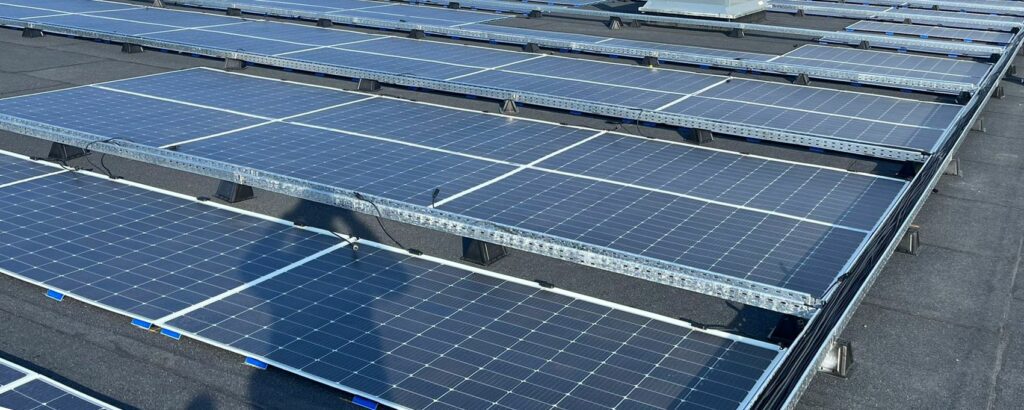
Fashion Arena Prague-Štěrboholy, CZ - 0.5 MWp - under construction (visualization)
Types of Mounting Structures for Solar Panels
Solar panel mounting structures are critical components in any photovoltaic (PV) system, ensuring that the panels are securely positioned to maximize their exposure to sunlight. Understanding the different types of mounting structures can help in selecting the most suitable system for specific needs and conditions. Here are some common types of solar panel mounting structures:
1. Roof-Mounted Systems
Roof-mounted solar systems are the most common type for residential installations due to their cost-effectiveness and space efficiency. They leverage the existing roof structure to support the panels, reducing the need for additional materials and labor.
- Railed Systems: These involve attaching rails to the roof, with solar panels secured to the rails using clamps.
- Rail-less Systems: Solar panels are directly attached to the roof using bolts and screws, reducing material costs and installation time.
- Shared-Rail Systems: This method uses fewer rails by sharing a single rail between two rows of panels, reducing the number of roof penetrations and materials needed.
2. Ground-Mounted Systems
Ground-mounted systems are ideal for locations with ample land and for installations where roof conditions are not suitable.
- Fixed-Tilt Mounts: These structures hold the panels at a fixed angle, optimized for the geographical location to maximize solar exposure throughout the year.
- Adjustable-Tilt Mounts: These allow the angle of the panels to be changed manually or automatically to optimize sunlight capture during different seasons.
3. Pole-Mounted Systems
Pole-mounted systems elevate solar panels above the ground on a single pole or multiple poles.
- Top-of-Pole Mounts: Panels are mounted at the top of a pole, which can be adjusted for tilt and orientation.
- Side-of-Pole Mounts: Panels are attached to the side of a pole, often used for smaller installations or specific applications like solar lighting.
4. Tracking Systems
Tracking systems are advanced ground-mounted systems that move to follow the sun’s path, significantly increasing energy production.
- Single-Axis Trackers: These systems move the panels from east to west, following the sun’s daily movement.
- Dual-Axis Trackers: These adjust both horizontally and vertically, providing optimal alignment with the sun throughout the year, though they are more complex and expensive.
5. Building-Integrated Photovoltaics (BIPV)
BIPV systems integrate solar panels directly into the building materials, such as roof tiles, facades, and windows. This approach combines functionality with aesthetics, making it a popular choice for new constructions and major renovations.
6. Floating Solar Mounts
Also known as floatovoltaics, these systems install solar panels on bodies of water like reservoirs and ponds. They save land space and benefit from the cooling effect of water, which can increase panel efficiency.
7. Carport Solar Mounts
Carport systems install solar panels atop carports, providing dual benefits of vehicle protection and electricity generation. They are particularly useful in areas with large parking spaces.
Key Considerations for Choosing a Mounting Structure
When selecting a mounting structure, it’s important to consider factors such as:
- Space availability: Ground-mounted and pole-mounted systems require more space than roof-mounted systems.
- Orientation and tilt: Optimizing the angle and direction of the panels to maximize solar exposure is crucial for energy production.
- Structural integrity: Ensuring that the roof or ground can support the weight and wind load of the panels.
- Cost: Different mounting systems vary significantly in cost due to materials, labor, and complexity.
By understanding these different types of mounting structures, you can make informed decisions to ensure the efficiency and longevity of your solar power system. However, addressing the structural challenges associated with photovoltaic (PV) systems can be complex and requires specialized knowledge and experience. For businesses aiming to implement solar solutions without compromising on safety and effectiveness, partnering with professionals is highly recommended.
Greenbuddies offers expert services in assessing and installing PV systems, ensuring that your solar installations are both structurally sound and optimized for maximum energy production. With their extensive experience and industry knowledge, Greenbuddies can handle the intricacies of solar panel mounting, from site assessment to installation and maintenance. Their expertise not only mitigates risks associated with inadequate structural integrity but also enhances the overall performance and longevity of your solar power system.
For more detailed information, academic references such as Greentumble and Energy Theory provide comprehensive guides on solar panel mounting systems and their installation processes. However, when it comes to implementing these solutions, the expertise of professionals like Greenbuddies can make a significant difference, ensuring that your solar investments are safe, efficient, and sustainable.
Importance of Static Considerations in PV System Installation
When installing photovoltaic (PV) systems, understanding the static characteristics of the building structure is crucial. The term „static“ in this context refers to the structural capacity and stability of the building to support the added weight and forces exerted by the PV panels. Ensuring that the static properties of the roof or supporting structure are adequate is vital to prevent any potential damage or failure.
Lightweight PV panels, such as eArc modules, are designed to mitigate static concerns by significantly reducing the overall load on the roof. Traditional solar panels, with their substantial weight, can pose a risk to buildings with limited static capacity. In contrast, eArc modules, being 70% lighter and up to 95% thinner than conventional glass panels, exert much less stress on the supporting structure. This reduction in weight helps preserve the static integrity of older buildings or those not initially designed to bear heavy loads.
The static analysis involves assessing the load-bearing capacity of the roof, considering factors such as the weight distribution of the PV system, wind loads, and potential snow loads. By conducting a thorough static evaluation, installers can determine whether additional structural reinforcements are necessary or if lightweight PV solutions like eArc panels are sufficient.
Incorporating advanced PV technology that addresses static concerns not only ensures the safety and longevity of the installation but also expands the applicability of solar energy to a wider range of buildings. This approach promotes the adoption of sustainable energy solutions while safeguarding the structural health of existing and new constructions.
In conclusion, static considerations are a fundamental aspect of PV system installation. Leveraging lightweight and innovative solutions like eArc panels can significantly alleviate static issues, making solar energy accessible and viable for a broader range of building types, thus promoting a more sustainable future.
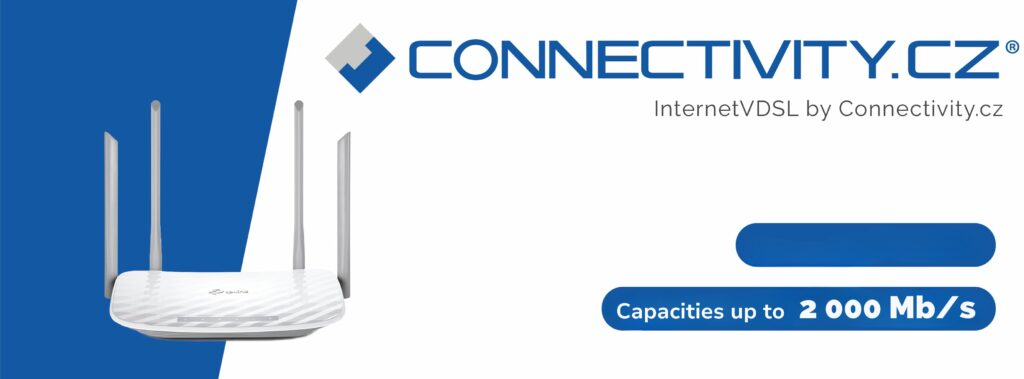
Internet VDSL in Czech republic
Connectivity.cz is a reliable company providing Optical and VDSL Internet connection services across the entire territory of the Czech Republic, having been active in the market since 2010.
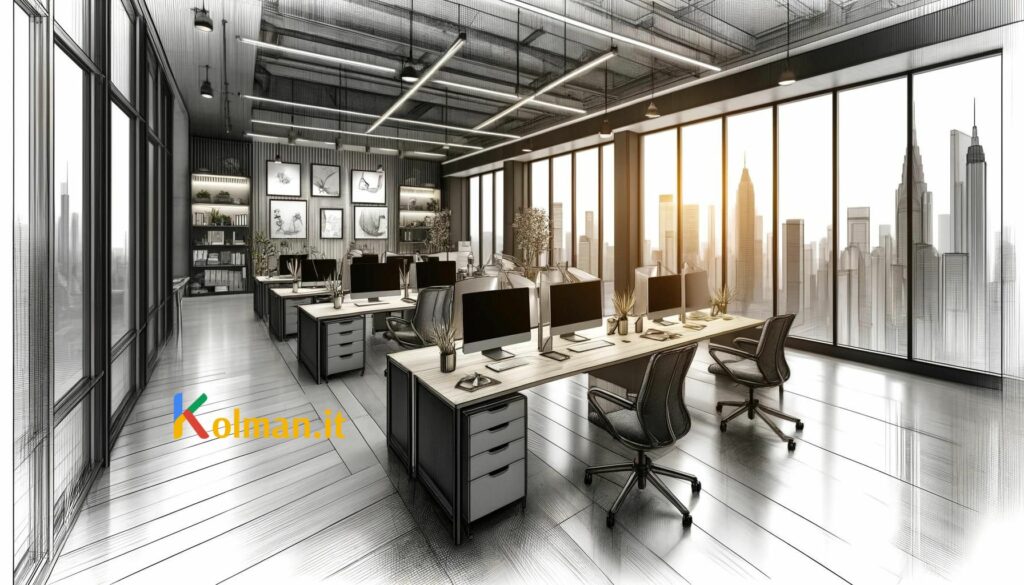
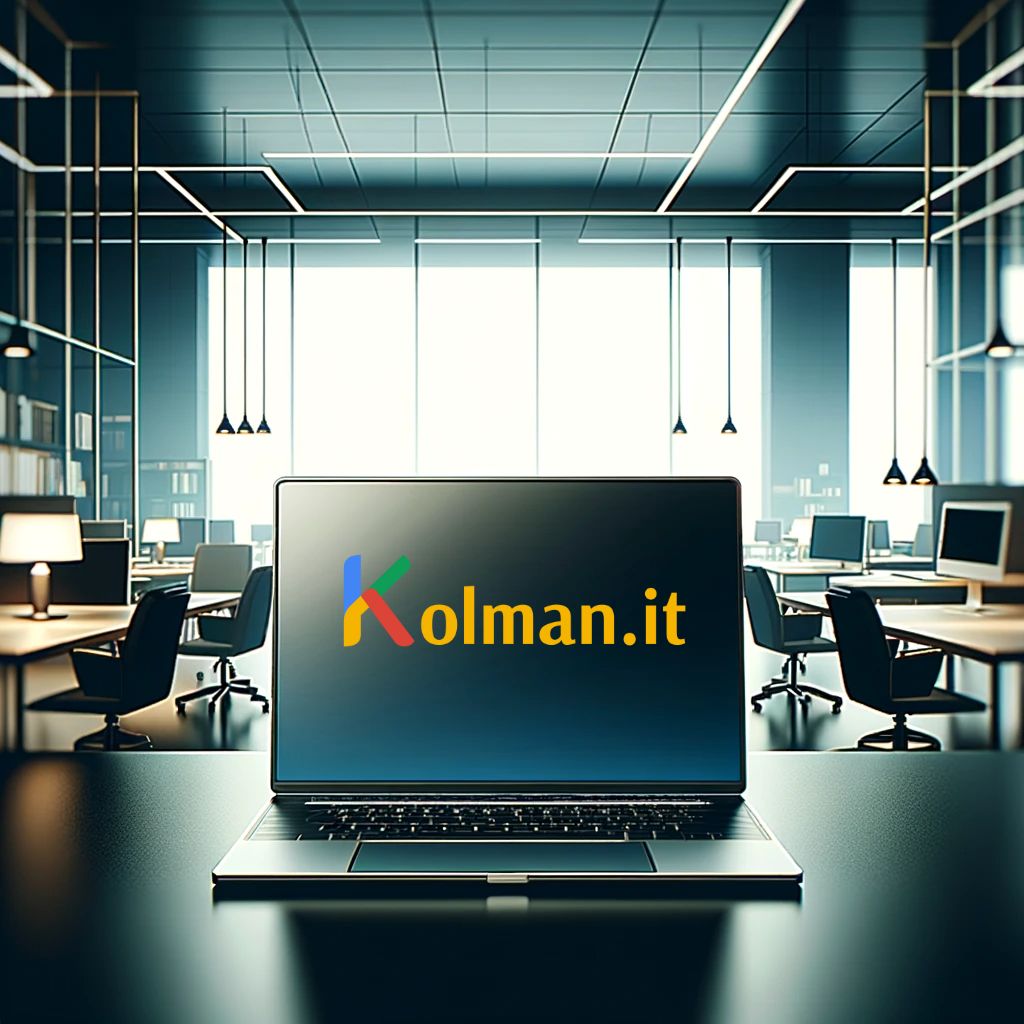
Conclusion
Kolman.it has proven to be a leader in the field of digital marketing and SEO optimization in Prague. Through their expertise in creating tailored digital marketing strategies, they ensure an enhanced online presence for businesses, connecting them with their ideal customers. Their approach is not just about keyword selection; it encompasses a comprehensive strategy that includes content optimization, technical website improvements, and a deep understanding of target customer search behavior.
The team at Kolman.it leverages advanced SEO techniques and marketing tools to not only elevate websites to the top of search results but to ensure they stay there. By focusing on quality traffic, they guarantee that businesses attract genuinely interested potential customers, thus significantly improving conversion rates and overall online visibility.
Their dedication to creating campaigns that resonate with the audience and their creative approach to content ensures that messages are not just heard but also acted upon. Whether through SEO, social media, email marketing, or PPC campaigns, Kolman.it is committed to making your brand’s digital presence robust and compelling.
This review underscores the importance of a strategic, well-executed digital marketing plan in today’s competitive digital landscape. With Kolman.it, businesses can confidently navigate the complexities of online marketing, secure in the knowledge that they are supported by a team of experts dedicated to their success.
Discussion
As we conclude this exploration of the dynamic world of Marketing, we invite you to share your experiences, insights, and tips in the comments below.
- Have you encountered specific challenges or discovered effective strategies in your journey with digital marketing? We encourage you to contribute to our community by sharing your valuable expertise. If you have questions or seek advice on any aspect related to Marketing, feel free to ask.
Let’s foster a collaborative space where knowledge is shared, questions are answered, and the community thrives. Your input can be instrumental in helping others navigate the nuances of Digital marketing and unlock new levels of success in the realm of online marketing.
Sources: InternetVDSL.cz, HowtoPerfect Internet, Analýza konkurence v online prostředí: Jak na to a proč je důležitá
Keywords: Solar Panels Sunman

